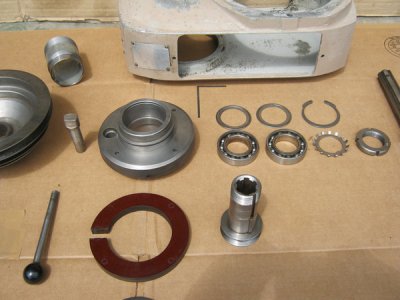- Joined
- Apr 26, 2014
- Messages
- 242
Hello again all. While testing my newly-acquired 21-100 I found that there was quite a lot of noise from the spindle assembly at high speeds. Imagine my surprise when I loosened the belt and found I could lift the pulley hub (part #22 in the Army 21-100 manual) right out of the pulley with two fingers! The nut on the bottom of hub had come loose and fallen inside of the top of the quill.
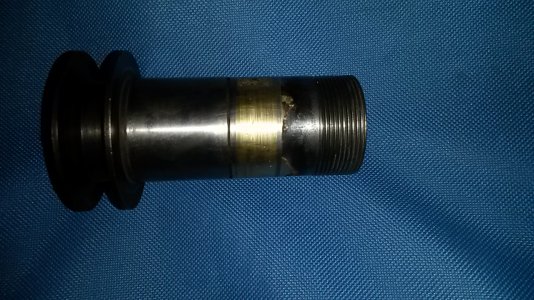
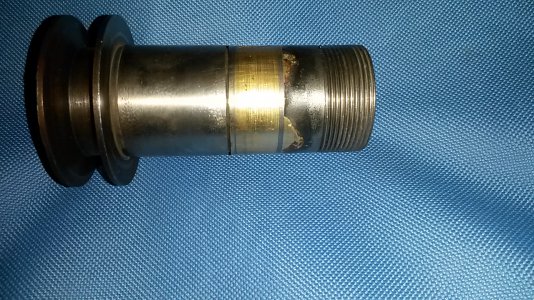
The hub had obviously had an attempted repair before using brazing. The bearings themselves run smooth - my guess is that the nut was never properly tightened after this previous repair attempt and the hub has been bouncing around in the pulley ever since.
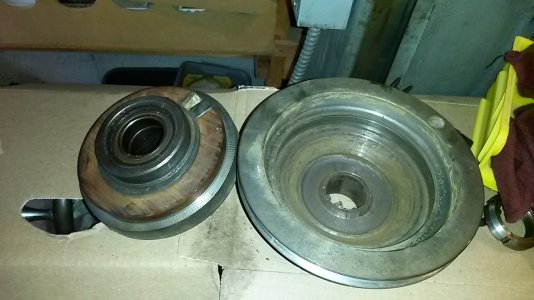
So, this appears to be a steel shaft. How would one go about doing a second repair? My only lathe is a little Sherline (don't laugh). I believe this shaft would just fit on that lathe if I turned an arbor which fit snuggly on the inside of the splines within this hub. I could build up the damaged area with another brazing attempt then turn it down to a slight press fit into the pulley bearings. Some forum's say not to heat a shaft like this to brazing temperatures in case it is hardened as this could temper the piece. If so, it looks like someone has beat me to it!
Advise is appreciated!!


The hub had obviously had an attempted repair before using brazing. The bearings themselves run smooth - my guess is that the nut was never properly tightened after this previous repair attempt and the hub has been bouncing around in the pulley ever since.

So, this appears to be a steel shaft. How would one go about doing a second repair? My only lathe is a little Sherline (don't laugh). I believe this shaft would just fit on that lathe if I turned an arbor which fit snuggly on the inside of the splines within this hub. I could build up the damaged area with another brazing attempt then turn it down to a slight press fit into the pulley bearings. Some forum's say not to heat a shaft like this to brazing temperatures in case it is hardened as this could temper the piece. If so, it looks like someone has beat me to it!
Advise is appreciated!!


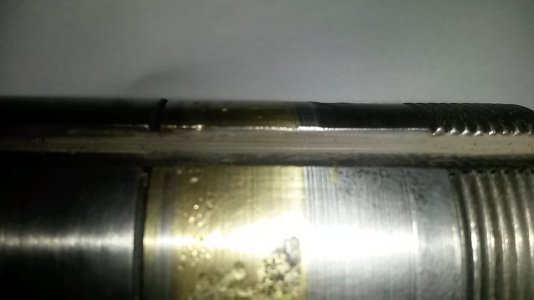
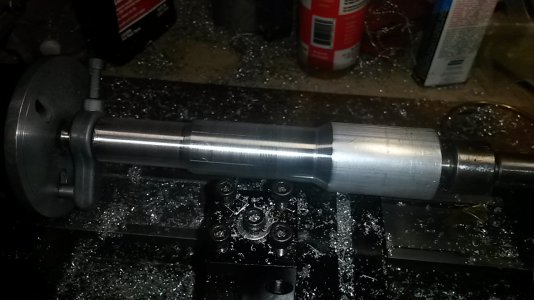
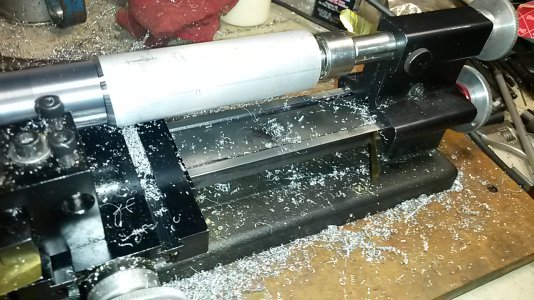
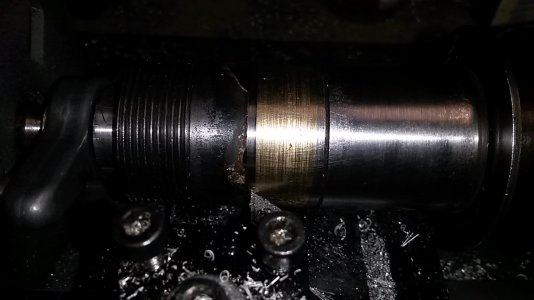
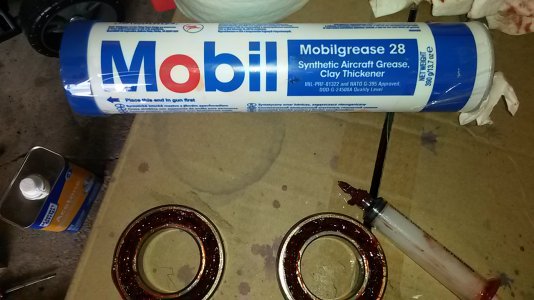
![20150705_132204[1].jpg 20150705_132204[1].jpg](https://www.hobby-machinist.com/data/attachments/64/64122-ef73e1c62f9a9753fe0a2e398475264e.jpg)
